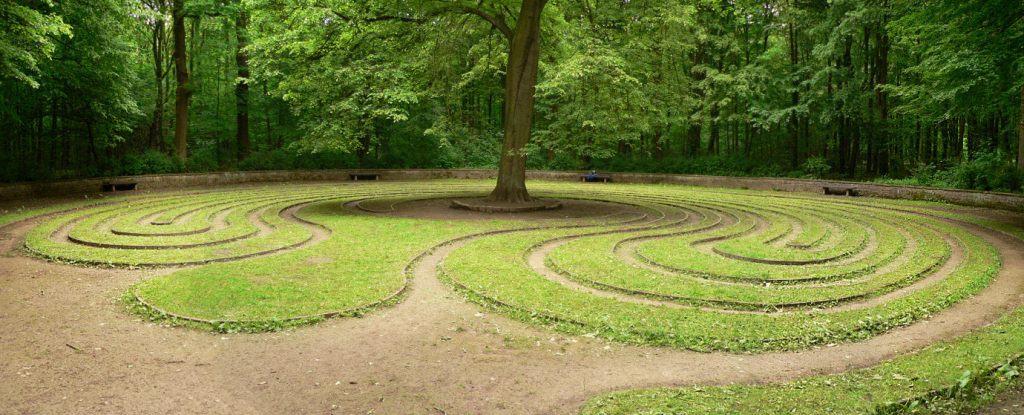
Credit: Axel Hindemith – Eigenes Werk des ursprünglichen Hochladers; Rasenlabyrinth in der Eilenriede
“The type Baltic wheel is an own form of a labyrinth, for some strict experts it is even none. Since it often has branching paths and a second one, mainly short path from or to the middle. And often at that an outer path with more choices.
The best historical example is the Rad in der Eilenriede in Hannover (Germany). And the restored Wunderkreis of Kaufbeuren (Germany). Others have not survived and are only known in literature. There is an affinity with the Indian labyrinth (Chakra Vyuha), because it is based like this on the triangle as a basic pattern.
Here I present a sort of prototype with a dimension between axes of 1 m which is so rotated that the central axis runs by the middle of the widening in the inner part. The eight circuits are surrounded by an outer ring and embedded in a circle with a total of 22 m for the diameter.
The whole is scaleable, that means the dimensions can be changed proportionally by multiplication with a factor. Every measurement multiplied by say 0.5 generates a labyrinth with a diameter of 11 m and a dimension between axes of 0.5 m and cut in halves all radii.
Best of all one starts in the middle and fixes at first the main axis with the points M1 and AX1. The remaining centres M2 to M4 are defined by intersecting the distances from two different (predetermined) points. M5 lies rectangular to the centre M1.
Then the axes of the different limitation lines are specified in their designated area starting from the precedent fixed centres of the circles. The different arcs follow each other freely of crease, because they come together in the common tangent vertically to the centre. This sounds more complicated than it is.
Here all measurements in a design drawing: see, copy or print the design drawing as a PDF file” [credit]


